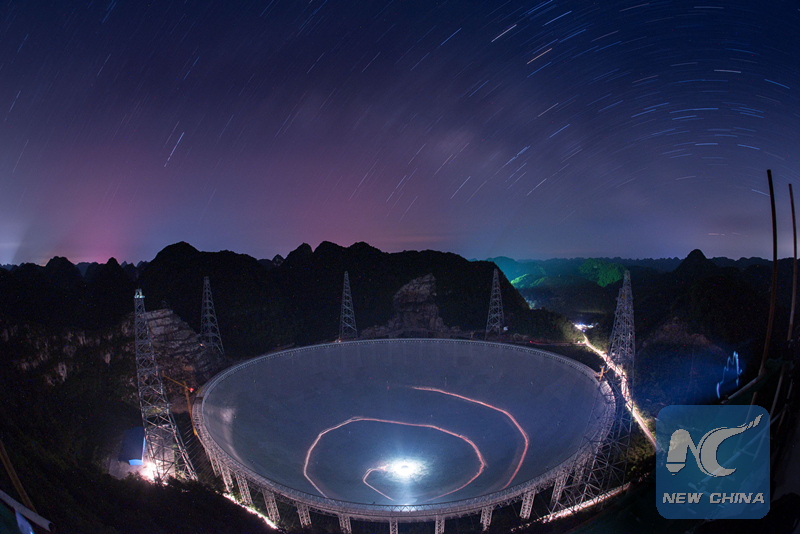For half a century, the US National Science Foundation's Arecibo telescope, sited in Puerto Rico, has been the world's largest radio observatory. It measures 305 meters across and among other major discoveries has confirmed the existence of neutron stars. The observatory also featured prominently in the movie Contact.
But now a Chinese observatory has superseded Arecibo. According to China's Xinhua news service, installation of the 500-meter FAST radio telescope is complete, with the last triangular reflector put into place. The observatory is expected to begin observing the heavens in September.
China has spent $180 million on the telescope since beginning construction in 2011 and will devote the next couple of years to testing and refining the massive instrument. After Chinese researchers receive the initial opportunities to use the telescope the government plans to open it to scientists worldwide, said Peng Bo, director of the NAO Radio Astronomy Technology Laboratory.
Radio telescopes are generally large because the light from stars and galaxies they observe is so faint. However, some of the most energetic objects in the universe, such as pulsars and quasars, emit much more strongly in the radio portion of the electromagnetic spectrum than in the optical light range, making radio telescopes by far the best instruments to study these violent areas of the universe. It is also believed that distant civilizations in the galaxy might be detectable by measuring their radio wave emissions.
Construction of the FAST instrument has not been without controversy. To reduce human radio wave emissions near the site in the south-central Chinese province of Guizhou, China will move 2,029 families—a total of 9,110 people—who live near the telescope. Residents will receive about $1,800 for housing compensation.



